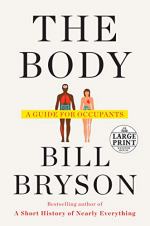|
This section contains 1,499 words (approx. 4 pages at 400 words per page) |

|
Summary
Chapter 8 begins with diabetes, which scientists did not understand as connected to the pancreas until 1920. Before that time, almost nothing could be done about the disease, Bryson writes. The pancreas makes and secretes enzymes and it also produces insulin, although we did not understand this function or even what insulin, a hormone, was until late in medical history. Each molecule of insulin in our bodies lasts only five to 15 minutes, meaning we need constant replenishment. One London doctor, Frederick Banting, experimented by tying off the pancreatic ducts in dogs and produced pure insulin. The discovery of insulin, Bryson writes, was “the closest thing to resurrection modern medicine ever produced” (139). Diabetes comes in two varieties -- type 1, which is inherited, and type 2, which people develop over their lifetimes. Type 2 diabetes appears to be linked to unhealthy living, but it also seems to...
(read more from the Chapter 8: The Chemistry Department Summary)
|
This section contains 1,499 words (approx. 4 pages at 400 words per page) |

|




